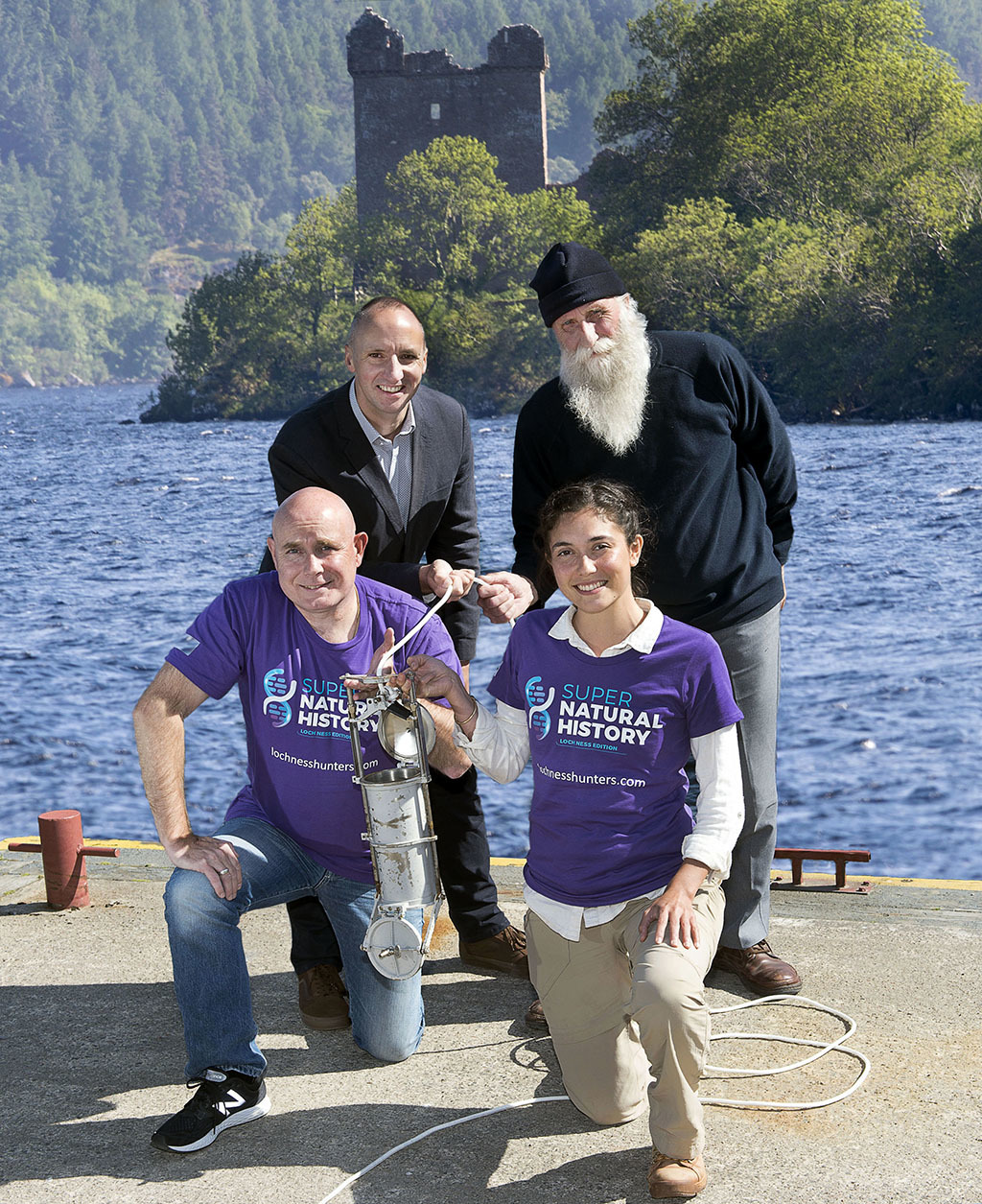
Scientific search of Loch Ness getting underway
A bid to find Nessie’s neighbours is underway, with a new investigation to uncover anything unusual in Loch Ness.
The mission to identify what lives in the UK’s biggest by volume freshwater loch is being led by the Super Natural History team – a global group of scientists – and has been hailed by VisitScotland as an exciting venture into the mystery of Nessie.
The loch’s inhabitants could be revealed through DNA sampling techniques used by the team – who are keeping an eye out for any irregular species.
The examination involves the sampling of water, the concentration of living things from that water and the extraction of the DNA from these. The team will sample all over the loch over a two-week period to determine the types of creatures that live there.
Professor Neil Gemmell of the University of Otago in Dunedin, New Zealand leads the team which includes Adrian Shine from the Loch Ness Project who has conducted previous research on the loch. Similar investigations are being carried out at nearby Lochs Morar, Oich and Garry as control groups that could potentially reveal Nessie’s presence in Loch Ness.
As creatures move through the loch, they leave tiny fragments of DNA through their skin, scales, feathers, fur, faeces and urine. The team is travelling the length of the loch on the Loch Ness Project’s research vessel, Deepscan, taking water samples from three different depths.

A new investigation to uncover anything unusual lurking in Loch Ness has begun. Pictured are (L-R back) – Chris Taylor, VisitScotland Regional Leadership Director, Adrian Shine, Leader of the Loch Ness Project, (front) Professor Neil Gemmell, leader of the Super Natural History Team, and Christina Lynggaard, member of the Super Natural History Team (Photo: Trevor Martin)
The samples will be sent to labs in New Zealand, Australia, Denmark,and France to be analysed and the final findings of the search will be released in early 2019.
In 2016 a 30-foot long Loch Ness Monster model as found on the loch bed during a state-of-the art sonar search by Kongsberg Maritime and supported by The Loch Ness Project and VisitScotland.
The finding was a prop from the 1970 film, The Private Life of Sherlock Holmes, directed by Billy Wilder and starring Robert Stephens and Christopher Lee and it is believed the model sank after its buoyant humps were removed.
Loch Ness is famous throughout the world, not only for the monster which is said to inhabit its waters, but as an area of outstanding natural beauty.
Discoveries already made within its waters include: a crashed Wellington bomber from the Second World War, a 100-year-old Zulu class sailing fishing vessel and parts of John Cobb’s speed record attempt craft Crusader which crashed at over 200mph in 1952.
The Loch Ness Monster phenomenon is worth millions to the Scottish economy. Hundreds of thousands of visitors travel to Loch Ness and Drumnadrochit every year to catch a glimpse of the mythical monster.

The Loch Ness Monster has fascinated visitors for decades
Chris Taylor, VisitScotland regional leaderships director, said: ‘The mystery and the intrigue of the Loch Ness Monster attracts visitors from all over the world to the stunning area every year. It is exciting to welcome Professor Gemmell and his team to the loch and we will be eagerly anticipating their findings.
‘While the research could provide an insight into one of the world’s most famous enigmas, it will certainly offer a closer look at all of the different creatures living in the loch.
‘Tourism is the heartbeat of the Scottish economy, creating jobs and sustaining communities, so it is great to have a spotlight on Loch Ness and encourage more visitors to discover what lies beneath its depths and beyond its banks.’
Professor Neil Gemmell, of the University of Otago, said: ‘Scotland is dear to my heart because my mother and her family are Scottish, I’m delighted to be here to undertake our environmental DNA investigation of Loch Ness.
‘It’s a place of extraordinary natural beauty. We’re delighted with the amount of interest the project has generated in the science and, monster or not, we are going to understand Loch Ness, and the life in it, in a new way.’
Adrian Shine, leader of the Loch Ness Project, said: ‘The Loch Ness Project has spent over 40 years assembling species list for Loch Ness the hard way using nets and microscopes and now looks forward to comparing the results from this very elegant project.
‘But there will be a Loch Ness Monster for as long as people want there to be.’
For more information on the project click HERE.
TAGS

